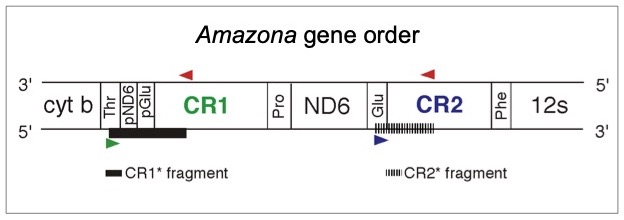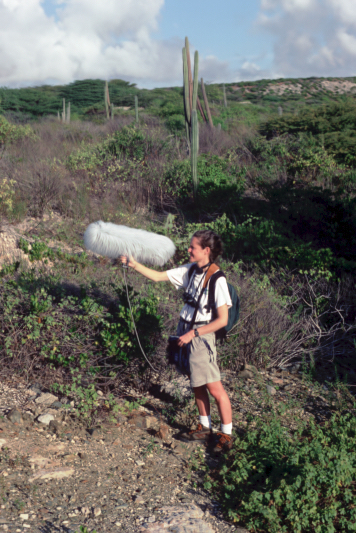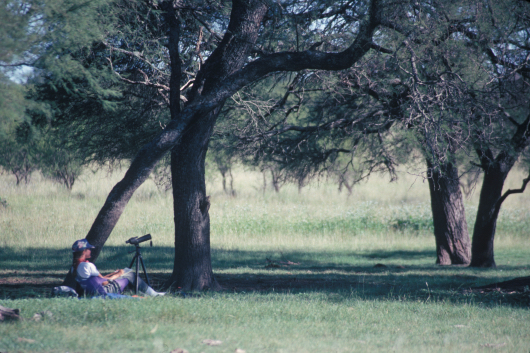Research Interests
Parrots have been a common theme in my research, but my interests are varied.
Mitochondrial genome evolution
 My interest in mitochondrial genome evolution resulted from a collaborative work with
Tim Wright, in which we serendipitously discovered that parrots in the genus Amazona
have duplicate control regions in their mt genomes. Subsequent work has shown that
control region duplications have arisen at least six times across the Psittaciformes,
and are associated with changes in base composition asymmetry in the rest of the mt
genome.
My interest in mitochondrial genome evolution resulted from a collaborative work with
Tim Wright, in which we serendipitously discovered that parrots in the genus Amazona
have duplicate control regions in their mt genomes. Subsequent work has shown that
control region duplications have arisen at least six times across the Psittaciformes,
and are associated with changes in base composition asymmetry in the rest of the mt
genome.
Vocal communication
 Parrots are well known for their vocal learning abilities, which are shared with only
two other avian groups—the oscine passerines and hummingbirds. In passerines, learned
vocalizations (especially songs) have been studied extensively and are primarily used
in the context of mate selection and territorial interactions. On the other hand,
parrots use learned vocalizations in much broader social contexts, mediating interactions
with flock mates as well as with breeding partners. My work has focused on vocal evolution
in the brown-throated parakeet complex (Eupsittula pertinax), which includes five
subspecies that are endemic to small islands in the southern Caribbean.
Parrots are well known for their vocal learning abilities, which are shared with only
two other avian groups—the oscine passerines and hummingbirds. In passerines, learned
vocalizations (especially songs) have been studied extensively and are primarily used
in the context of mate selection and territorial interactions. On the other hand,
parrots use learned vocalizations in much broader social contexts, mediating interactions
with flock mates as well as with breeding partners. My work has focused on vocal evolution
in the brown-throated parakeet complex (Eupsittula pertinax), which includes five
subspecies that are endemic to small islands in the southern Caribbean.
Parrot systematics and biogeography
I first dipped my toes into molecular systematics as part of my doctoral thesis, where I used mtDNA sequence data to infer the relationships among Agapornis lovebirds. Since then, most of my work has involved Neotropical groups—the Amazona ochrocephala species complex, Pionopsitta parrots and Pteroglossus toucans, and the Ara militaris/ambiguus macaw complex.
Monk parakeets and the evolution of nest building
Monk parakeets are well known for their habit of constructing large stick nests, unlike other members of their order, all of which nest in cavities. The ability to construct a nest permits greater flexibility in nest placement, especially compared with the use of pre-existing cavities (cavity adoption). This flexibility may have facilitated the evolution of colonial nesting in monk parakeets.
